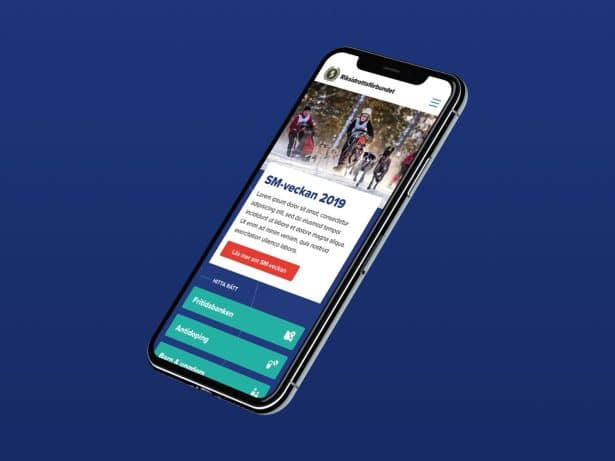SEO doesn't have to be complicated or time-consuming. In fact, there are several actions you can take right now to improve your visibility in search results. These are measures that are easy to implement yet capable of delivering noticeable results.
Here are seven smart SEO tactics that provide quick wins and can complement your long-term strategy. Perfect for those looking to optimize their website today and create better growth potential in search rankings. Let’s get started!
1. Optimize title tags
Why are title tags important?
A well-crafted, engaging title can lead to more clicks, which can enhance your visibility. While the SEO industry debates how much click-through rate (CTR) directly impacts rankings, it’s widely accepted that a higher CTR signals relevance to users.
How to optimize your title tags:
- Ensure each page has a unique title tag.
- Place your main keyword early in the title.
- Keep the length between 50-60 characters and make it compelling. Ask yourself: "Would I click this headline?"
Example: If you run an e-commerce store selling bicycles, a strong title might be: "Best Commuter Bikes of 2025 – Find Your Perfect Model." This appeals to both information-seekers and those close to making a purchase decision.
Optimizing title tags is one of the easiest yet most impactful SEO improvements you can make.
2. Focus on low-competition keywords
Competing for broad, high-traffic keywords like “buy bike online” can be tough. Major players often dominate these terms, making it difficult for smaller sites to rank.
Instead, target long-tail keywords like “beginner commuter bike” or “best electric bike for city riding.” These are more specific, easier to rank for, and attract a highly motivated audience.
Tips for finding the right keywords:
- Use Google’s autocomplete feature to explore keyword ideas.
- Scroll to the bottom of Google’s search results for related terms.
- Utilize tools like Ahrefs to identify trending keyword opportunities.
By focusing on long-tail keywords, you can attract relevant traffic without competing for overly saturated terms.
3. Create content that matches search intent
Every search has an underlying intention—whether it's informational or transactional. Your goal is to understand user intent and craft content that meets their expectations.
Example:
Someone searching “comparison of trail running shoes” is in the research phase and wants guidance. A guide comparing different models and features is ideal. Presenting them with a single product page instead risks losing their attention.
Here's how to match search intent:
- Provide guides, comparisons, and explainers for information-seekers.
- Offer clear product options and call-to-actions for purchase-ready users.
- Understand the customer journey and tailor content accordingly.
4. Deliver value quickly
Google tracks how long users stay on your page. If visitors leave quickly (high bounce rate), it signals that your page isn't meeting expectations. To counter this, make your content easy to scan and deliver value fast.
Quick wins for improved user experience:
- Provide key information upfront—skip lengthy intros.
- Use large fonts, short paragraphs, and subheadings to improve readability.
- Include visuals like tables, images, and bullet points to break up text.
5. Build internal links
Internal linking is an easy and highly effective SEO strategy that boosts both user experience and search engine rankings. It helps search engines understand your site’s structure and highlights your most important pages.
How to create internal links:
- Identify key business-critical pages, such as top services or products.
- Link to these pages from other relevant articles.
- Use descriptive anchor text like “Explore our running shoes here” or “Learn more about our bike models.”
6. Refresh old content
Content that once performed well can lose its rankings over time if left unchanged. Updating and optimizing these pages can quickly regain lost traffic.
Content update checklist:
- Add new information, statistics, and examples.
- Ensure all links are functional and relevant.
- Enhance structure with updated headers and subheaders (H1, H2, H3).
- Revamp title tags and meta descriptions to reflect current content.
Keeping content fresh signals to Google that your site is reliable, potentially leading to higher rankings.
7. Speed up your website
A slow site frustrates users and hurts rankings. Improving load times enhances both user experience and SEO performance.
Steps to improve load speed:
- Compress images and use modern formats like WebP.
- Enable browser caching.
- Minify unnecessary CSS and JavaScript files.
Use tools like Google PageSpeed Insights to identify optimization opportunities.
8. Attract links by offering valuable data
Links remain a crucial ranking factor. One effective way to earn them is by creating data-rich content that others want to reference—like industry statistics or research findings.
Strategy:
If there’s a high demand for a particular data point but limited sources, create a dedicated page showcasing that information. Present key insights clearly to make your page a go-to reference.
Example: A page answering “How many people own electric bikes in Sweden?” can quickly become a resource cited by blogs and journalists in the industry.
Need help implementing these tactics?
At Mild, we help businesses achieve their goals through effective SEO strategies. Contact us today to take the next step on your SEO journey.


